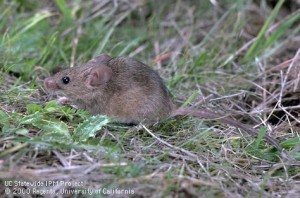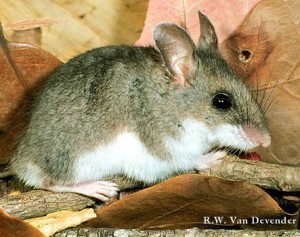Mice Problems MN | Mice Removal & Prevention
Mice are remarkably well-adapted for living year-round in homes, food establishments and other structures. Homeowners are especially likely to notice mice during winter, following their fall migration indoors in search of warmth, food and shelter. Once mice become established inside a home, they can be extremely difficult to control.
One Mouse In My House Is One Too Many
That furry little blur you just saw zip across in front of your fireplace? Those brown, rice-shaped droppings behind the refrigerator? Maybe a mouse… maybe two. O.K., how much trouble can a couple of mice be?
How Much Trouble Can One Mouse Be?
You don’t get to be the most numerous mammal on the planet without some secret to success. And the rodents have a couple. To begin with they are prolific breeders, the absolute champions among mammals. According to an article published by the Illinois Department of Health, in a single year a female mouse can have 5 to 10 litters of 5 or 6 young each. In 10 weeks, those babies will be mature enough to repeat the process. Assume half the litter is male, the other half female. Holy cow!… You do the math.
Keep Mice From Taking Up Residence In Your Home

Adult House Mouse – House mice are frequently found in residential households. They lack a white underside and have a relatively hairless tail.
There’s more. Though mice have dietary preferences – grains, cereal, even peanut butter , they’ll basically settle for anything they can get. They can climb vertically up just about any rough surface, navigate cables like the guy who walked across Niagara Falls, jump about a foot high, and crawl through holes you could sharpen a pencil in. Oh yeah, and they use your insulation for nests and contaminate your food with their droppings; they can cause structural damage by chewing on wood and a safety hazard by gnawing on your wires. And then there is the potential diseases and parasites. Clearly, these tiny rodents are capable of a lot more harm than good.
Unlike insects, mice, deer mice and other rodents are not capable of going dormant for the winter. While some mammals, such as raccoons, do hibernate during the winter, most simply seek a warmer shelter. Mice, rats, and squirrels actively work on building warm nests year round, often inside homes.
Droppings, fresh gnaw marks, and tracks indicate areas where mice are active. Mouse nests are made from fine shredded paper or other fibrous material, usually in sheltered locations. House mice have a characteristic musky odor that identifies their presence. Mice are active mostly at night, but they can be seen occasionally during daylight hours.

Adult Deer Mouse – Adult deer mouse. Note the large ears and eyes and the white underside of the body and tail—all distinguishing characteristics between the deer mouse and house mouse.
While the house mouse has not been found to be a carrier of hantavirus, other mice have. Most notable are the deer mouse and the white-footed mouse, which sometimes invade cabins and outbuildings in Minnesota. The house mouse is distinguished from the deer mouse and the white-footed mouse by its overall gray-colored coat. The other two species have a white underside with a distinct line of demarcation between the dark coloration on top and the white underside. In addition, the tail on the house mouse has almost no fur on it, whereas the tails of the deer mouse and the white-footed mouse are moderately to well furred and are light underneath and dark on top.
Think you might want to get rid of them?
Most experts in rodent control, say the best way to keep mice out of your house is, well, to keep them out. In other words, any opening larger than, say, a pencil, should be sealed.
For most people – including those who just don’t have the patience to crawl around looking for quarter-inch openings — rodent control consists of removing the mice quickly and efficiently. Hiring a Minnesota Wild Animal Removal Expert is your best bet in getting rid of these rodents once and for all. They have well established techniques and are well experienced in dealing with these pests. Not only will they control the animals’ population in your home, and will also ensure they will not come back through proper sealing and guarding of entry points.
Don’t let a rodent infestation get out of control. Because mice multiply so quickly, just a few can lead to an out-of-control infestation before you know it. In a single year a female mouse can have 5 to 10 litters of 5 or 6 young each. In 10 weeks, those babies will be mature enough to repeat the process. Assume half the litter is male, the other half female. Holy mice!… You do the math.
If you notice droppings or signs of gnawing around the house could indicate a mice problem. Contact a mice removal expert right away to help identify the culprit and quickly eliminate the infestation.





